The IUCN Red List is a compilation of around 150,388 species of plants and animals that have been assessed by the International Union for Conservation of Nature (IUCN). It categorizes each species into one of nine levels of threatened status.
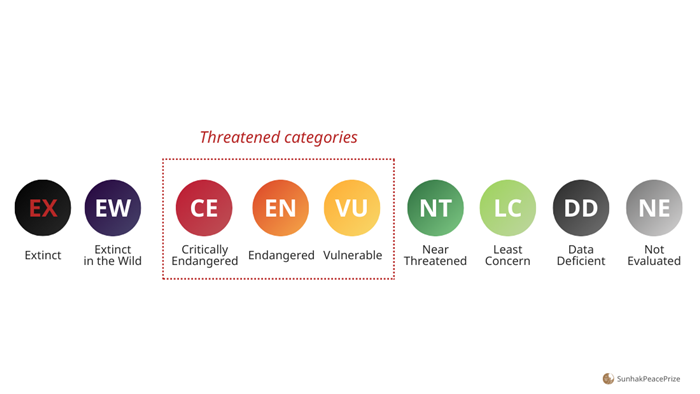
―
What is IUCN Red List?
―
A. The IUCN Red list is a report on biodiversity published every two to five years by the International Union for Conservation of Nature (IUCN), which organizes 150,388 plant and animal species into nine groups according to their level of threatened extinction.
While 150,388 may seem like a large number, it represents only 7% of the number of plant and animal species on Earth. The World Wide Fund for Nature has reported that 69% of vertebrates on Earth have declined in the last 50 years, so the actual number of endangered species is probably much higher.
The first comprehensive list of the conservation status of Earth’s animal and plant species was created in 1963, and it has since been continually updated and refined. The global "Criteria for Assessing the Conservation Status of Animal and Plant Species" published in 1994 introduced a nine-category system that is still in use today.
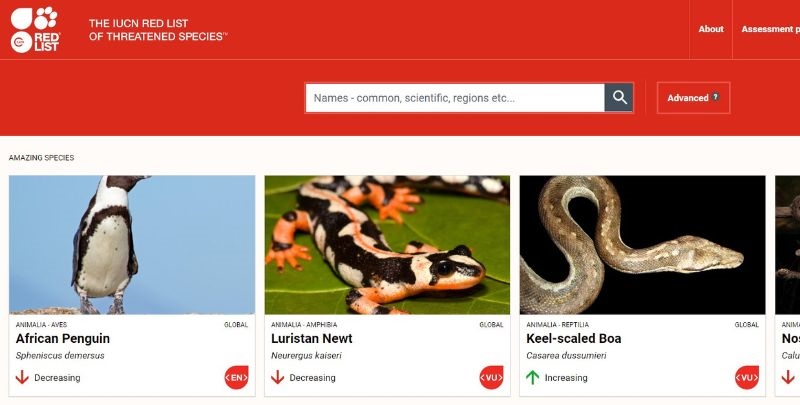
Visit the IUCN website for a list of threatened species IUCN Red List of Threatened Species
―
The Red List Categories
―
The 150,388 animal and plant species are categorized into nine categories based on their extinction risk, which is assessed by the following: geographic range, population size and speed of population decline or increase.
The Red List Categories
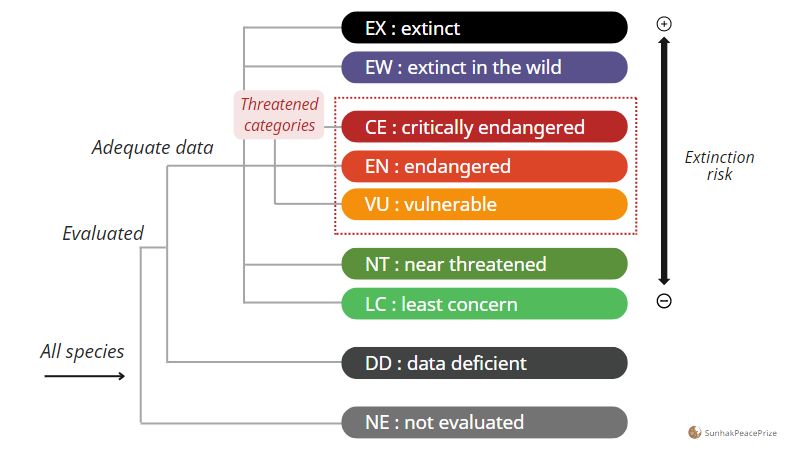
ㆍExtinct (EX) : There is no reasonable doubt that the last individual has died. The IUCN distinguishes between current extinctions and past extinctions based on the year 1500
ㆍExtinct in the wild (EW) : Known only to survive in captivity, cultivation or well outside its natural range
ㆍCritically endangered (CE) : Facing extremely high risk of extinction in the wild
ㆍEndangered (EN) : Facing a very high risk of extinction in the wild
ㆍVulnerable (VU) : Facing a high risk of extinction in the wild.
ㆍNear Threatened (NT) : Close to qualifying, or likely to qualify for a threatened category in the near future (8,816 species)
ㆍLeast concern (LC) : Population is stable enough that it is unlikely to face extinction in the near future (77,491 species)
ㆍData deficient (DD) : Not enough information on abundance or distribution to estimate its risk of extinction (approx. 20,000 species)
ㆍNot evaluated (NE) : No assessment has been made
The higher in the category, higher the likelihood of extinction from Earth. In particular, three categories are categorized as threatened: ▲critically endangered (CR), ▲endangered (EN) and ▲vulnerable (VU).
Currently 42,108 species (28% of the Red List) are categorized as "threatened," meaning they need more attention and management to avoid extinction.
IUCN Red List of Threatened Species™: July 2022 Update – YouTube
Another group of species that we should pay particular attention to are those under the Data Deficient category. The IUCN Red List of Threatened Species categorizes species as Data Deficient when there is insufficient data to decide, such as the killer whale and the armored armadillo.
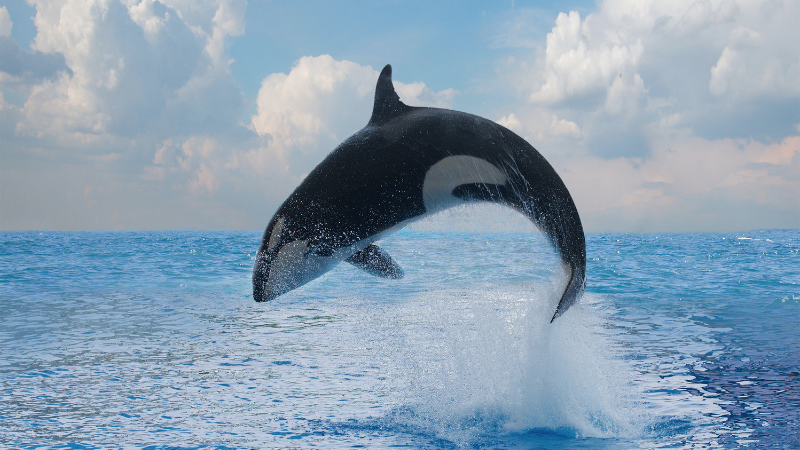
―
Q. How do species get on the IUCN Red List?
And can species change categories?
―
A. Anyone with sufficient knowledge of the species can submit information about an endangered species to the IUCN after completing a free training program. The IUCN then evaluates the submission and, if certain criteria are met, adds the species to the Red list.
The species' status is reassessed periodically and may be uplisted or downlisted.
Story of the Guarajuba tree in Brazil
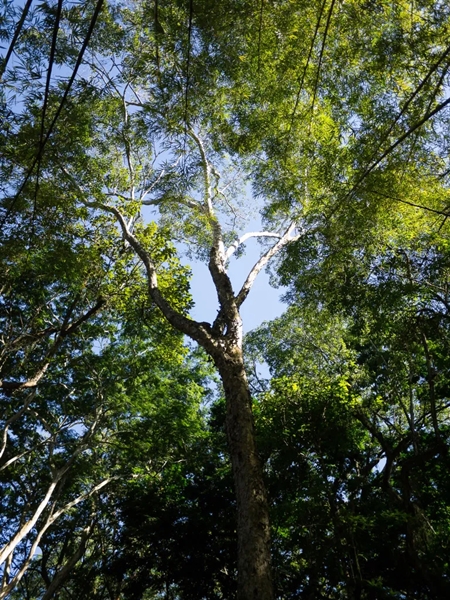
Source: Global Trees Campaign Terminalia_acuminata - Global Trees
The Brazilian Guarajuba tree (Terminalia acuminata) has been listed as extinct in the wild since 1998 but was re-listed as endangered in 2021 after several specimens were discovered unexpectedly at the Rio de Janeiro Botanical Garden in 2015.
Changes in category are decided very carefully. The downlist takes place after an observation period of at least five years to ensure that the recovery progress is genuine.
Story of Dugong, the vanishing manatee
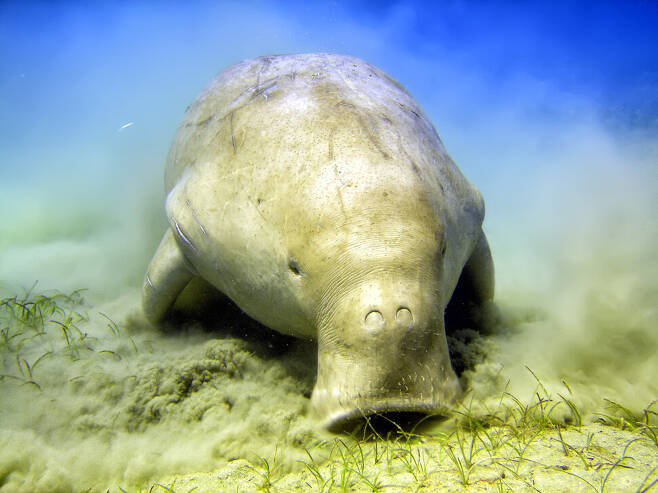
Source: Getty Image Bank
Dugongs are large sea mammals that move slowly in shallow waters and graze on seaweed. These friendly-looking sea creatures were once mistakenly known as "mermaids" by sailors.
They are currently classified as vulnerable on the IUCN Red List of Threatened Species, but researchers are recommending that the species be uplisted to endangered.
In August 2022, researchers from the Zoological Society of London (ZSL) and the Chinese Academy of Sciences published in Proceedings of the Royal Society Open Science that dugongs in China are functionally extinct. It means that even if this species is not completely extinct, its population is too small to survive as a sustainable population.
―
A sign of hope:
Indian tigers population on the rise
―
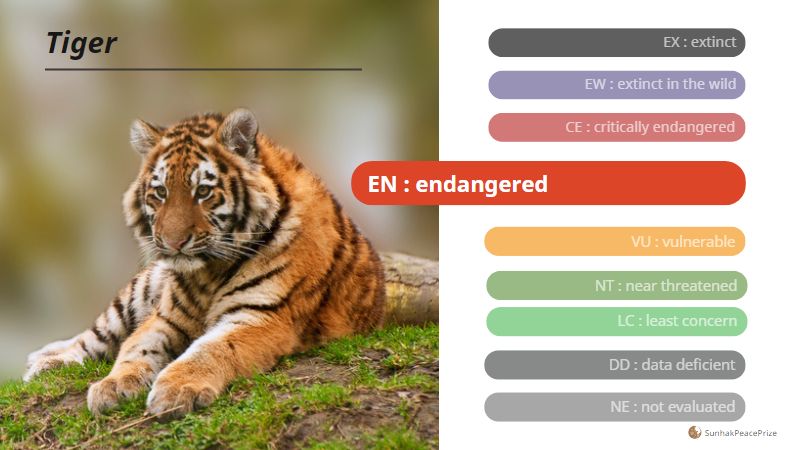
Source: ICUN
Tigers are a critically endangered species, currently listed as Endangered (EN) on the International Union for Conservation of Nature (IUCN) Red List.
There are currently around 4,000 tigers living in the wild around the world, compared to over 100,000 of them roaming on earth a century ago. This is a 97% decline in numbers.
The plummeting numbers are due to a combination of human population growth, deforestation, habitat destruction, and illegal poaching. In response, Indian authorities have struggled to conserve tiger population since 1973, designating 53 tiger reserves covering nearly 70,000 square kilometers.
The results have been encouraging. In April 2023, the Indian government announced that the country's wild tiger population had reached 3,167. This is an increase of about 200 in the last four years and more than 900 compared to 2014.
According to the World Wide Fund for Nature (WWF), the new figure of 3,167 represents an astounding 70% of the world's wild tiger population, and marks a successful end to the decades of tiger conservation efforts by the Indian government.
Protecting endangered species means protecting our own lives in the global community where all living things are connected in a chain of coexistence.
The story of the Indian tiger is a sign of hope that species diversity can be preserved through human efforts. Since we humans are the ones who destroyed their habitats, it's our duty to give them back. As India's example shows, protecting endangered species requires strong policy protections at the government level. At the same time, we need to increase our awareness about how to protect the environment.
By visiting the IUCN website, you can find out about the endangered species in your area. Taking an interest in endangered species is an important start that will lead to conserving lives of more species.
IUCN Red List of Threatened Species (iucnredlist.org)
“The shortcut to protecting nature is
to develop a heart that loves nature.”
-Co-founder of the Sunhak Peace Prize
Dr. Sun Myung Moon-
Find out more about related issues: |
Written by Sharon Choi
Director of Planning
Sunhak Peace Prize Secretariat


